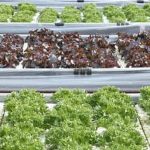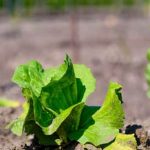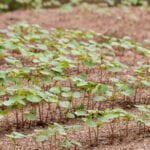Diatomaceous earth for vegetable gardens is a natural and effective way to improve soil health and protect plants from pests. Diatomaceous earth, or DE, is a type of sedimentary rock that is rich in silica and formed from the fossilized remains of tiny aquatic organisms called diatoms. In this article, we will explore the benefits of using diatomaceous earth in vegetable gardens, how to apply it to the soil, and its impact on plant growth.
Diatomaceous earth is known for its ability to control pests such as aphids, beetles, caterpillars, and other insects that can damage vegetable plants. Its abrasive texture damages the exoskeletons of insects, causing them to dehydrate and ultimately die. Additionally, DE can improve soil health by promoting drainage and preventing compaction. Its high silica content also contributes to stronger cell walls in plants, leading to healthier and more resilient vegetables.
When using diatomaceous earth in vegetable gardens, it’s important to follow best practices for application and consider factors such as the type of vegetables being grown. Understanding the dos and don’ts of using DE can maximize its effectiveness while minimizing potential risks to beneficial insects or pets. Through this article, we aim to provide valuable insights into harnessing the power of diatomaceous earth for thriving vegetable gardens.
How to Use Diatomaceous Earth in Vegetable Gardens
Diatomaceous earth is a natural sedimentary rock that is made up of the fossilized remains of diatoms, a type of hard-shelled algae. It is typically formed underwater and can be found in various parts of the world. For vegetable gardens, diatomaceous earth can be incredibly beneficial due to its ability to control pests, improve soil health, and contribute to plant growth.
When it comes to using diatomaceous earth in vegetable gardens, there are specific instructions that gardeners should follow to ensure its effectiveness. Here are some key steps for applying diatomaceous earth to the soil:
- Sprinkle a thin layer of food-grade diatomaceous earth over the soil surface around the base of vegetable plants.
- Reapply after each rainfall or watering to maintain its pest-repelling properties.
- Avoid applying diatomaceous earth directly onto flowers or other pollinator-attracting plants.
For different types of vegetables, there are best practices for using diatomaceous earth. For example, leafy greens such as lettuce and kale may require more frequent application compared to root vegetables like carrots and radishes. Additionally, dos and don’ts for using diatomaceous earth in vegetable gardens include not overapplying and avoiding inhalation when handling the substance.
Benefits of Using Diatomaceous Earth in Vegetable Gardens
Using diatomaceous earth in vegetable gardens offers several benefits that contribute to overall plant health and productivity. The first benefit is pest control. Diatomaceous earth acts as a natural insecticide by dehydrating insects upon contact, making it an effective method for controlling pests without the use of harmful chemicals.
In addition to pest control, diatomaceous earth also improves soil health by enhancing drainage and aeration while promoting the retention of water and nutrients. This contributes to better root development and overall plant growth. Furthermore, the silica content found in diatomaceous earth can help strengthen cell walls in plants, leading to healthier and more resilient vegetable crops.
The use of diatomaceous earth in vegetable gardens also has positive environmental impacts when compared to chemical pesticides. Diatomaceous earth is non-toxic and does not leave harmful residues on produce or leach into groundwater, making it eco-friendly and sustainable for long-term use. With these benefits in mind, many gardeners are increasingly turning to diatomaceous earth as a safe alternative for maintaining healthy vegetable gardens while minimizing their environmental impact.
Benefits of Using Diatomaceous Earth in Vegetable Gardens
When it comes to the health and growth of vegetable plants, diatomaceous earth can offer several benefits. As a natural insecticide, diatomaceous earth is effective at controlling pests such as aphids, beetles, caterpillars, and other common garden insects. Its abrasive texture damages the exoskeletons of these pests, ultimately leading to their dehydration and death. This makes diatomaceous earth an excellent alternative to chemical pesticides, especially for those looking to practice organic and sustainable gardening.
In addition to pest control, diatomaceous earth also promotes soil health in vegetable gardens. When applied to the soil, it helps improve drainage and aeration by breaking up compacted soil particles. This allows for better absorption of water and nutrients by the plant roots, ultimately contributing to healthier and more robust vegetable plants. Furthermore, the presence of silica in diatomaceous earth helps with the overall structure of the soil, which in turn supports strong root development and enhanced plant growth.
Overall, using diatomaceous earth in vegetable gardens provides a natural and environmentally friendly way to protect plants from pests while improving the overall health of the soil. By promoting a balanced ecosystem within the garden, diatomaceous earth contributes to sustainable gardening practices that benefit both the environment and human health.
| Benefit | Description |
|---|---|
| Pest Control | Diatomaceous earth acts as a natural insecticide, effectively controlling common garden pests. |
| Soil Health | It improves soil structure, drainage, aeration, and nutrient absorption while supporting strong root development. |
| Sustainable Gardening | It promotes eco-friendly practices by providing a natural alternative to chemical pesticides. |
Diatomaceous Earth vs Chemical Pesticides
When it comes to pest control in vegetable gardens, many gardeners are faced with the decision of whether to use chemical pesticides or natural alternatives such as diatomaceous earth. Diatomaceous earth is a natural substance that is formed from the fossilized remains of diatoms, a type of hard-shelled algae. It is beneficial for vegetable gardens because it can effectively control pests without harmful chemicals.
One of the key differences between diatomaceous earth and chemical pesticides is their mode of action. While chemical pesticides typically target specific pests and can have negative effects on beneficial insects, diatomaceous earth works by physically damaging the exoskeletons of insects, causing them to dehydrate and die. This means that diatomaceous earth is non-toxic to humans and animals, making it a safer option for use in vegetable gardens.
In addition to its safety benefits, diatomaceous earth also has a lower environmental impact compared to chemical pesticides. Chemical pesticides can leach into the soil and water supply, causing harm to the environment and wildlife. Diatomaceous earth, on the other hand, breaks down naturally in the environment without leaving harmful residues.
This makes it a more sustainable choice for pest control in vegetable gardens. When considering the long-term effects of using diatomaceous earth in vegetable gardens, its eco-friendly nature sets it apart from chemical pesticides.
Overall, when comparing diatomaceous earth with chemical pesticides for use in vegetable gardens, it’s clear that diatomaceous earth offers a safer and more sustainable solution for pest control. By choosing diatomaceous earth for vegetable gardens, gardeners can protect their plants from pests while minimizing harm to the environment and promoting overall soil health.
Safety Precautions When Using Diatomaceous Earth
Handling Diatomaceous Earth Safely
When using diatomaceous earth in vegetable gardens, it is important to handle it with care to avoid any potential health risks. It is recommended to wear a dust mask, gloves, and protective eyewear when applying diatomaceous earth to the soil. This will help prevent inhalation of the fine particles and minimize skin irritation.
Potential Risks and Mitigation
While diatomaceous earth is generally considered safe for use in gardens, there are some potential risks associated with its use. Inhaling large amounts of diatomaceous earth dust can irritate the lungs, so it’s important to avoid breathing it in during application. Additionally, direct contact with the eyes should be avoided as it can cause irritation or discomfort. To mitigate these risks, it is best to apply diatomaceous earth on calm days and avoid working with it in windy conditions.
Protecting Beneficial Insects
Diatomaceous earth can be harmful to beneficial insects such as bees and butterflies if not used properly. To protect these helpful pollinators, refrain from applying diatomaceous earth directly onto flowering plants.
Instead, focus on applying it around the base of plants and creating barriers to deter pests while minimizing exposure for beneficial insects. By taking these safety precautions when using diatomaceous earth for vegetable gardens, gardeners can harness its pest control benefits while minimizing any potential risks to themselves or beneficial insects.
Choosing the Right Type of Diatomaceous Earth for Vegetable Gardens
Different Types of Diatomaceous Earth Available on the Market
When choosing diatomaceous earth for your vegetable garden, it’s important to be aware that there are different types available on the market. The two primary categories are food-grade and filter-grade diatomaceous earth. Food-grade diatomaceous earth is the safest option for use in gardens as it is free from additives and chemicals.
On the other hand, filter-grade diatomaceous earth may contain higher levels of crystalline silica, which can be harmful if inhaled. It’s crucial to select a product labeled as food-grade when using diatomaceous earth in your vegetable garden.
Factors to Consider When Purchasing Diatomaceous Earth for Vegetable Gardens
When shopping for diatomaceous earth, consider the source and purity of the product. Look for a reputable supplier that offers high-quality, pure food-grade diatomaceous earth. Additionally, considering the quantity needed for your garden is also important as it will impact your budget. Some brands offer bulk options at a lower cost per pound, which may be more economical for larger vegetable gardens.
Recommendations for Specific Brands or Varieties
While there are several brands of food-grade diatomaceous earth available, some popular choices among gardeners include Harris Diatomaceous Earth and Diatomaceously Earth Powder by Diatoma®️. These products have gained positive reviews for their effectiveness in controlling pests and promoting soil health in vegetable gardens.
However, it’s always best to research and read customer feedback before making a purchase decision. Additionally, consider reaching out to local gardening communities or experts for recommendations based on their experiences with using diatomaceous earth for vegetable gardens.
By making an informed choice regarding the type and quality of diatomaceous earth used in your vegetable garden, you can maximize its benefits while ensuring safe and effective pest control and soil enhancement.
Success Stories of Using Diatomaceous Earth in Vegetable Gardens
Using diatomaceous earth for vegetable gardens has proven to be a successful and effective method for many gardeners. Here are some real-life success stories and testimonials from those who have experienced positive results by incorporating diatomaceous earth into their gardening practices:
- Increased Pest Control: One gardener, Sarah, had been struggling with aphids infesting her vegetable garden for years. After researching natural pest control methods, she decided to try diatomaceous earth. By applying the powder around the base of her plants, Sarah noticed a significant decrease in aphid populations within just a few days. She was thrilled with the results and continued using diatomaceous earth as a preventative measure for future growing seasons.
- Improved Soil Health: Another gardener, Mark, had been dealing with compacted soil in his vegetable garden, which was hindering the growth of his plants. He decided to mix diatomaceous earth into his soil to help improve its structure and drainage. After a few months, he noticed that his vegetables were thriving and the soil had become more crumbly and loose, allowing for better root development.
- Enhanced Plant Growth: A community garden group started using diatomaceous earth as a natural fertilizer alternative in their vegetable plots. Over time, they observed that their vegetable plants were healthier and producing higher yields compared to previous seasons when traditional fertilizers were used. The group attributed this success to the mineral-rich composition of diatomaceous earth and its ability to promote overall plant growth.
These success stories serve as evidence of the numerous benefits of using diatomaceous earth for vegetable gardens. Whether it’s controlling pests, improving soil health, or enhancing plant growth, many gardeners have found that incorporating diatomaceous earth into their gardening routine has led to more bountiful harvests and healthier vegetation.
It’s important to note that each success story is unique, and results may vary depending on various factors such as climate, soil type, and specific plant species. Nonetheless, these testimonials provide insight into the potential impact of using diatomaceous earth in vegetable gardens as a sustainable and natural gardening solution.
Conclusion and Recommendations
In conclusion, diatomaceous earth is a highly beneficial natural substance that can significantly contribute to the success of vegetable gardens. Its unique composition and properties make it an excellent choice for pest control, soil health improvement, and overall plant growth. By using diatomaceous earth in your vegetable garden, you can protect your plants from harmful pests while also promoting a healthy environment for them to thrive.
Furthermore, diatomaceous earth offers a safer and more environmentally friendly alternative to chemical pesticides. Its long-term effects on the soil are positive, and it helps maintain a balance between pest control and the protection of beneficial insects. When used correctly and with caution, diatomaceous earth can be a valuable addition to any sustainable gardening practice.
For readers interested in trying diatomaceous earth for their own vegetable gardens, it is important to carefully follow the instructions for application and handle the substance with care. Additionally, when purchasing diatomaceous earth, be sure to consider factors such as purity and particle size to ensure its effectiveness in your garden.
Ultimately, I encourage further exploration and experimentation with diatomaceous earth as part of sustainable gardening practices, as it has proven to be a successful tool for many gardeners seeking natural solutions for their vegetable gardens.
Frequently Asked Questions
Can I Put Diatomaceous Earth in My Vegetable Garden?
Yes, you can put diatomaceous earth in your vegetable garden. It is a natural and effective way to control pests without using harmful chemicals. Just make sure to reapply after it rains.
Is Diatomaceous Earth Safe for Tomato Plants?
Diatomaceous earth is safe for tomato plants, as long as it is applied correctly. It can help control pests like aphids, whiteflies, and spider mites that commonly affect tomato plants without harming the plants themselves.
What Pests Does Diatomaceous Earth Get Rid Of?
Diatomaceous earth can effectively get rid of a wide range of pests, including ants, beetles, caterpillars, earwigs, slugs, and many more. Its abrasive texture damages the exoskeleton of insects, causing them to dehydrate and die.

If you’re looking to get into vegetable gardening, or are just looking for some tips on how to make your current garden better, then you’ve come to the right place! My name is Ethel and I have been gardening for years. In this blog, I’m going to share with you some of my best tips on how to create a successful vegetable garden.





